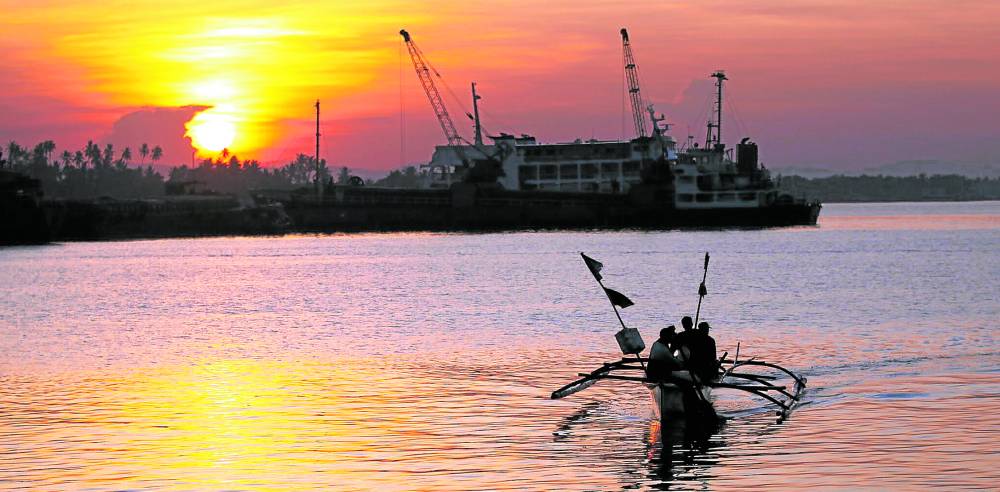Illegal fishing back in Tayabas Bay ahead of holidays

A DAY’S CATCH Fishermen in Lucena City, Quezon province, prepare their nets for another fishing trip in Tayabas Bay in this photo taken in July 2018. —DELFIN T. MALLARI JR.
LUCENA CITY—Illegal fishers have returned to Tayabas Bay in Quezon province in time for the Christmas holiday, and some of them admitted that they were forced to engage in unlawful fishing activities out of economic necessity.
“Words spread that the bay, particularly in the portion of Sariaya town, has plenty of fish to catch,” a fisherman from the coastal village of Dalahican here told the Inquirer on Thursday.
Another fisherman said they needed to earn money in time for Christmas.
Sherwin Rosales, a fisheries technician at Sariaya’s agriculture office, pointed to Lucena-based fishers as the culprits behind the renewed illegal fishing activities in the area.
Rosales said authorities have recently seized illegal fishing gears, such as fine-mesh nets and large stationary fish traps, locally known as “baklad,” that were abandoned by some fishermen in their area.
Article continues after this advertisement“We will not let go of them. Our bantay-dagat (fish wardens) have been conducting continuous operations,” he said in an online interview.
Article continues after this advertisementAllan Castillo, Bureau of Fisheries and Aquatic Resources provincial fishery officer in Quezon, said their anti-illegal fishing operations were hampered when one of their patrol boats was damaged by Severe Tropical Storm “Paeng” (international name: Nalgae) in October.
“Probably, the illegal fishers have learned of the damage. But the patrol boat will soon be back and hunt them again,” Castillo said.
‘Butanding’ sightings
After Paeng, a school of whale sharks, locally known as “butanding,” has been spotted once again in the Sariaya town’s area of Tayabas Bay.
The whale sharks are usually seen in the vicinity of fish sanctuaries fronting the coastal villages of San Roque and Bignay 2.
“With the return of more butanding, it indicates the presence of more fish in our waters,” Rosales said.
The Department of Environment and Natural Resources noted that the presence of whale sharks was a sign of the bay’s “rich marine biodiversity.”
The Sariaya fish market has also been registering a daily high-volume trade of assorted fish species.
Sanctuary
The Tayabas coastline in Sariaya town also serves as a sanctuary for “pawikan” (marine turtles) that usually come to lay and hatch their eggs from October to December. The presence of pawikan also indicates a balanced marine ecosystem and an abundant supply of fish in the area.
The bay, located northwest of the island province of Marinduque, stretches from San Juan town in Batangas province to the towns of Sariaya, Pagbilao, Padre Burgos, Agdangan, Unisan, Pitogo, Macalelon, General Luna, Catanauan, Mulanay, and San Francisco and Lucena City in Quezon.
Local fishers said the situation in Lamon Bay was worse due to continuous rampant illegal fishing blamed on the presence of large commercial fishing operations.
The Quezon police have noted rampant illegal fishing in their daily reports, including blast fishing, the continuous operations of commercial fishers inside municipal water whose boats used the destructive “pangulong” (purse seines), “taksay” (ring nets) and “buli-buli” (modified Danish seine).
The fishers assailed the illegal presence of commercial fishing vessels inside the municipal waters that compete against small fishers.
Thirty-four of Quezon’s 42 towns are coastal—17 along Lamon Bay in the Pacific Ocean, 12 off the Tayabas Bay facing the China Sea and five along the Ragay Gulf.